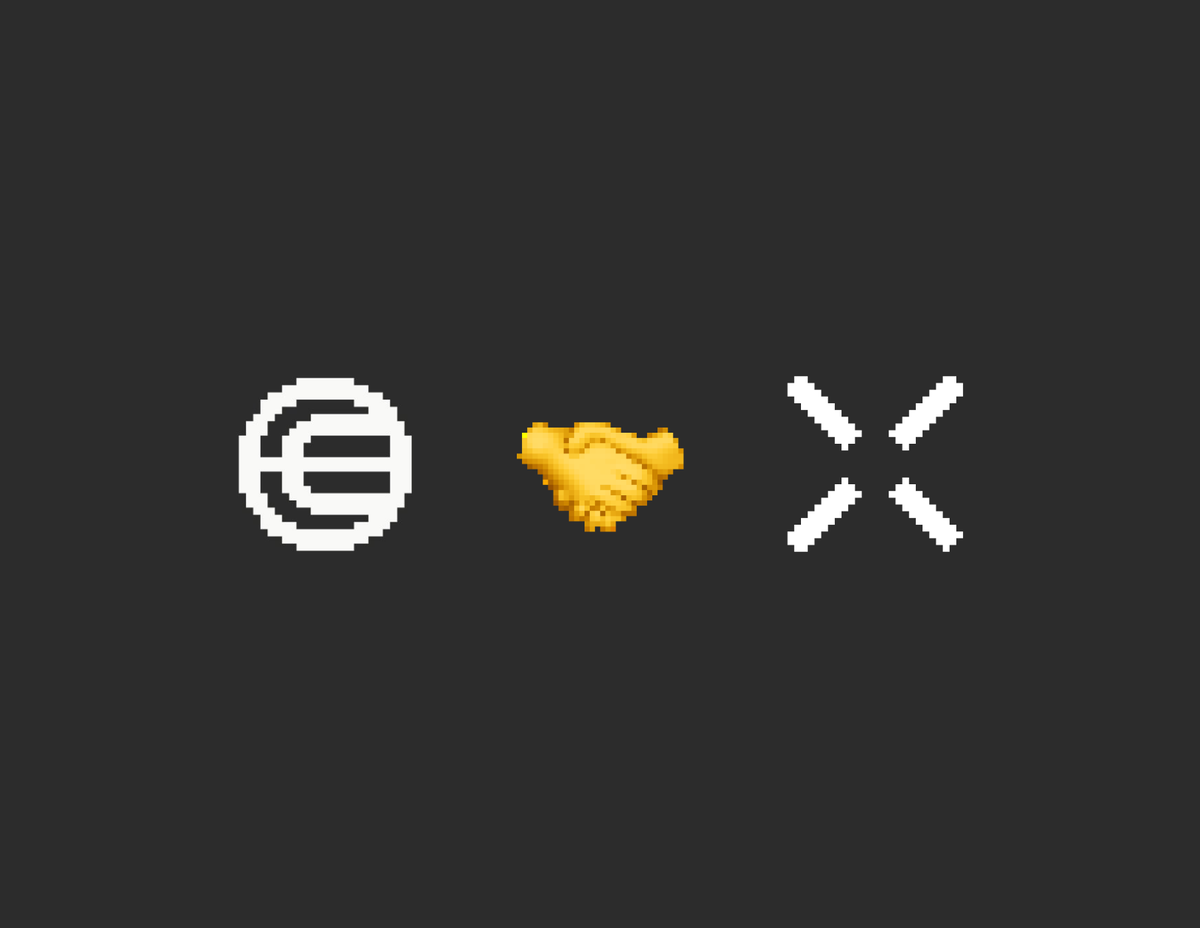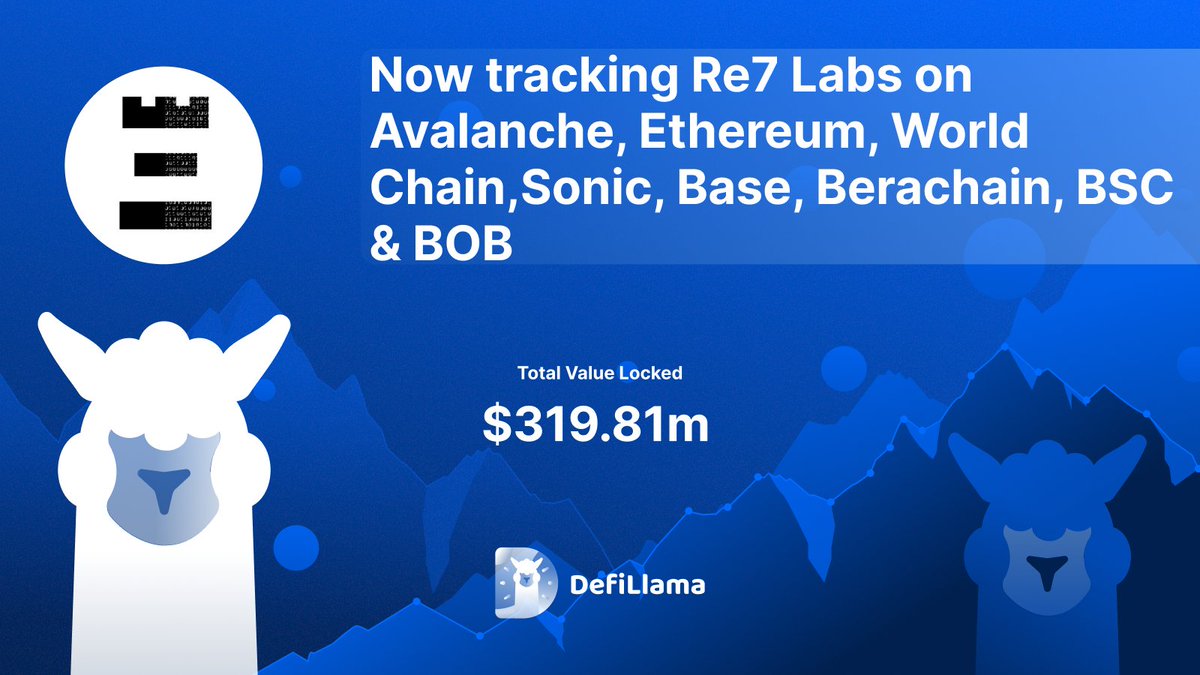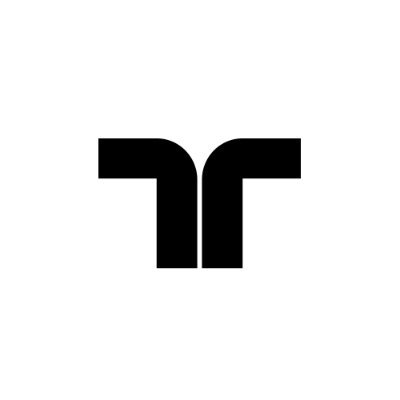
WLD
Precio de Worldcoin
$1,1081
-$0,00130
(-0,12 %)
Cambios en los precios de las últimas 24 horas

¿Qué opinas hoy sobre el precio de WLD?
Comparte lo que piensas usando el pulgar hacia arriba si crees que la moneda va a adoptar una tendencia alcista o hacia abajo si crees que va a adoptar una tendencia bajista.
Vota para ver los resultados
Aviso
El contenido social en esta página ("Contenido"), incluidos, entre otros, los tuits y las estadísticas proporcionadas por LunarCrush, proviene de terceros y se proporciona "tal cual" solo con fines informativos. OKX no garantiza la calidad o exactitud del Contenido, y el Contenido no representa las opiniones de OKX. No pretende proporcionar (i) asesoramiento o recomendación de inversión; (ii) una oferta o solicitud para comprar, vender o mantener activos digitales; o (iii) asesoramiento financiero, contable, legal o fiscal. Los activos digitales, incluidas las stablecoins y los NFT, implican un alto grado de riesgo y pueden fluctuar enormemente. El precio y el rendimiento de los activos digitales no están garantizados y pueden cambiar sin previo aviso.<br></br>OKX no proporciona recomendaciones de inversión o de activos. Debes considerar cuidadosamente si el trading o el holding de activos digitales es adecuado para ti a la luz de tu situación financiera. Consulta a tu asesor legal/fiscal/profesional de inversiones para preguntas sobre tus circunstancias específicas. Para obtener más información, consulta nuestros <a href="/help/terms-of-service">Términos de us</a>o y <a href="/help/risk-compliance-disclosure">Advertencia de riesgo</a> Al usar el sitio web de terceros ("Sitio web de terceros" o "TWP"), aceptas que el uso del TWP estará sujeto a los términos de TWP. Salvo que se indique expresamente por escrito, OKX y sus afiliados ("OKX") no están asociados de ninguna manera con el propietario u operador del TPW. Aceptas que OKX no es responsable de ninguna pérdida, daño ni cualquier otra consecuencia generada por tu uso del TPW. Ten en cuenta que usar un TWP puede generar una pérdida o reducción de tus activos. El producto puede no estar disponible en todas las jurisdicciones.
Información de mercado de Worldcoin
Cap. de mercado
La cap. de mercado se calcula multiplicando la oferta circulante de una moneda por su precio más reciente.
Cap. de mercado = Oferta circulante × Último precio
Cap. de mercado = Oferta circulante × Último precio
Oferta circulante
La cantidad total de una moneda que está disponible públicamente en el mercado.
Clasificación de la capitalización de mercado
La clasificación de una moneda en términos de valor de capitalización de mercado.
Máximo histórico
El precio más alto que una moneda ha alcanzado en su historial de trading.
Mínimo histórico
El precio más bajo que una moneda ha alcanzado en su historial de trading.
Cap. de mercado
$1,67B
Oferta circulante
1.509.903.533 WLD
15,09 % de
10.000.000.000 WLD
Clasificación de la capitalización de mercado
41
Auditorías

Última auditoría: 22 dic 2023
Alto 24 h
$1,1455
Bajo 24 h
$1,0618
Máximo histórico
$11,9650
-90,74 % (-$10,8569)
Última actualización: 10 mar 2024
Mínimo histórico
$0,20000
+454,05 % (+$0,90810)
Última actualización: 24 jul 2023
Feed de Worldcoin
El siguiente contenido proviene de .

Tommy
Sorprendido de que un estafador de Tinder con IA no haya estafado en masa a la gente
Trivial para hacer un bot de respuesta de IA, imágenes y videos
Los documentales nos muestran que la gente dará millones por "amor".
La propia IA de los usuarios puede detectar problemas a la defensiva. Worldcoin puede ayudarte.
Asustadizo 🤯
Mostrar original5,54 mil
9

Tommy
Sorprendido de que un estafador de Tinder con IA no haya estafado a millones de personas
Trivial para hacer un bot de autotexto, imágenes y videos.
Los documentales de Netflix nos muestran que la gente enviará millones por "amor" sin siquiera conocerse.
La IA local de los usuarios podría sacar a la luz problemas. Worldcoin también puede ayudar.
Da miedo
Mostrar original5,45 mil
7

Across
Explora World Chain y conecta WLD en segundos por centavos.
Vive en todo el mundo.

World Chain
WLD recibe un impulso de movilidad. Mueva rápidamente WLD entre Ethereum, Optimism y World Chain por centavos
¡Con @AcrossProtocol puede conectar instantáneamente transacciones de hasta 2 millones de WLD a la vez!

12,23 mil
32
Calculador de WLD


Rendimiento del precio de Worldcoin en USD
El precio actual de Worldcoin es de $1,1081. En las últimas 24 horas, Worldcoin disminuyó un -0,12 %. Actualmente, su oferta circulante es de 1.509.903.533 WLD y su oferta máxima, de 10.000.000.000 WLD, con lo que su capitalización de mercado completamente diluida (FDMC) es de $1,67B. En este momento, Worldcoin ocupa el puesto número 41 en la clasificación por capitalización de mercado. El precio de Worldcoin/USD se actualiza en tiempo real.
Hoy
-$0,00130
-0,12 %
7 días
-$0,14410
-11,51 %
30 días
+$0,31570
+39,84 %
3 meses
-$0,09390
-7,82 %
Conversiones populares de Worldcoin
Última actualización: 21/05/2025, 17:40
| 1 WLD a USD | 1,1068 $ |
| 1 WLD a EUR | 0,98173 € |
| 1 WLD a PHP | 61,6598 ₱ |
| 1 WLD a IDR | 18.174,06 Rp |
| 1 WLD a GBP | 0,82678 £ |
| 1 WLD a CAD | 1,5385 $ |
| 1 WLD a AED | 4,0620 AED |
| 1 WLD a VND | 28.725,67 ₫ |
Sobre Worldcoin (WLD)
La calificación proporcionada es una calificación agregada recogida por OKX de las fuentes proporcionadas y es solo para fines informativos. OKX no garantiza la calidad o exactitud de las calificaciones. No pretende proporcionar (i) asesoramiento o recomendación de inversión; (ii) una oferta o solicitud para comprar, vender o mantener activos digitales; ni (iii) asesoramiento financiero, contable, legal o fiscal. Los activos digitales, incluidas las stablecoins y las NFT, entrañan un alto grado de riesgo, pueden fluctuar enormemente e incluso perder su valor. El precio y el rendimiento de los activos digitales no están garantizados y pueden cambiar sin previo aviso. Tus activos digitales no están cubiertos por un seguro contra posibles pérdidas. Los rendimientos históricos no son indicativos de rendimientos futuros. OKX no garantiza ningún rendimiento, reembolso de capital o intereses. OKX no proporciona recomendaciones de inversión o de activos. Debes considerar cuidadosamente si el trading o la posesión de activos digitales es adecuado para ti a la luz de tu situación financiera. Consulta con tu asesor legal/fiscal/profesional de la inversión si tienes preguntas acerca de tus circunstancias específicas.
Mostrar más
- Sitio web oficial
- White paper
- Explorador de bloques
Sobre los sitios web de terceros
Sobre los sitios web de terceros
Al usar el sitio web de terceros ("Sitio web de terceros" o "TWP"), aceptas que el uso del TWP estará sujeto a los términos de TWP. Salvo que se indique expresamente por escrito, OKX y sus afiliados ("OKX") no están asociados de ninguna manera con el propietario u operador del TPW. Aceptas que OKX no es responsable de ninguna pérdida, daño ni cualquier otra consecuencia generada por tu uso del TPW. Ten en cuenta que usar un TWP puede generar una pérdida o reducción de tus activos.
Preguntas frecuentes sobre Worldcoin
¿Cuál es el valor actual de 1 Worldcoin?
Actualmente, un Worldcoin vale $1,1081. Para obtener respuestas e información sobre las acciones de precios de Worldcoin, estás en el lugar correcto. Explora los últimos gráficos de Worldcoin y opera de manera responsable con OKX.
¿Qué es una criptomoneda?
Las criptomonedas, como Worldcoin, son activos digitales que operan sobre libros mayores (ledger) públicos llamados blockchains. Obtén más información sobre las monedas y tokens que se ofrecen en OKX y sus distintas características, como su precio y gráficos en tiempo real.
¿Cuándo se inventaron las criptomonedas?
A raíz de la crisis financiera de 2008, creció el interés por las finanzas descentralizadas. Bitcoin ofrecía una solución novedosa al ser un activo digital seguro en una red descentralizada. Desde entonces, también se han creado muchos otros tokens como Worldcoin.
¿Va a subir el precio de Worldcoin hoy?
Consulta nuestra página de predicción de precios de Worldcoin para ver los pronósticos de precios y determinar tus objetivos de valor.
Declaración de GEI
Las regulaciones ESG (Environmental, Social and Governance) para los criptoactivos tienen como objetivo abordar su impacto ambiental (por ejemplo, la minería intensiva en energía), promover la transparencia y garantizar prácticas éticas de gobernanza para alinear la industria de las criptomonedas con objetivos más amplios de sostenibilidad y sociales. Estas regulaciones fomentan el cumplimiento de normas que mitigan los riesgos y promueven la confianza en los activos digitales.
Detalles del activo
Nombre
OKcoin Europe LTD
Identificador de entidad legal relevante
54930069NLWEIGLHXU42
Nombre del criptoactivo
Worldcoin
Mecanismo de consenso
Worldcoin is present on the following networks: ethereum, optimism.
The Ethereum network uses a Proof-of-Stake Consensus Mechanism to validate new transactions on the blockchain. Core Components 1. Validators: Validators are responsible for proposing and validating new blocks. To become a validator, a user must deposit (stake) 32 ETH into a smart contract. This stake acts as collateral and can be slashed if the validator behaves dishonestly. 2. Beacon Chain: The Beacon Chain is the backbone of Ethereum 2.0. It coordinates the network of validators and manages the consensus protocol. It is responsible for creating new blocks, organizing validators into committees, and implementing the finality of blocks. Consensus Process 1. Block Proposal: Validators are chosen randomly to propose new blocks. This selection is based on a weighted random function (WRF), where the weight is determined by the amount of ETH staked. 2. Attestation: Validators not proposing a block participate in attestation. They attest to the validity of the proposed block by voting for it. Attestations are then aggregated to form a single proof of the block’s validity. 3. Committees: Validators are organized into committees to streamline the validation process. Each committee is responsible for validating blocks within a specific shard or the Beacon Chain itself. This ensures decentralization and security, as a smaller group of validators can quickly reach consensus. 4. Finality: Ethereum 2.0 uses a mechanism called Casper FFG (Friendly Finality Gadget) to achieve finality. Finality means that a block and its transactions are considered irreversible and confirmed. Validators vote on the finality of blocks, and once a supermajority is reached, the block is finalized. 5. Incentives and Penalties: Validators earn rewards for participating in the network, including proposing blocks and attesting to their validity. Conversely, validators can be penalized (slashed) for malicious behavior, such as double-signing or being offline for extended periods. This ensures honest participation and network security.
Optimism is a Layer 2 scaling solution for Ethereum that uses Optimistic Rollups to increase transaction throughput and reduce costs while inheriting the security of the Ethereum main chain. Core Components 1. Optimistic Rollups: Rollup Blocks: Transactions are batched into rollup blocks and processed off-chain. State Commitments: The state of these transactions is periodically committed to the Ethereum main chain. 2. Sequencers: Transaction Ordering: Sequencers are responsible for ordering transactions and creating batches. State Updates: Sequencers update the state of the rollup and submit these updates to the Ethereum main chain. Block Production: They construct and execute Layer 2 blocks, which are then posted to Ethereum. 3. Fraud Proofs: Assumption of Validity: Transactions are assumed to be valid by default. Challenge Period: A specific time window during which anyone can challenge a transaction by submitting a fraud proof. Dispute Resolution: If a transaction is challenged, an interactive verification game is played to determine its validity. If fraud is detected, the invalid state is rolled back, and the dishonest participant is penalized. Consensus Process 1. Transaction Submission: Users submit transactions to the sequencer, which orders them into batches. 2. Batch Processing: The sequencer processes these transactions off-chain, updating the Layer 2 state. 3. State Commitment: The updated state and the batch of transactions are periodically committed to the Ethereum main chain. This is done by posting the state root (a cryptographic hash representing the state) and transaction data as calldata on Ethereum. 4. Fraud Proofs and Challenges: Once a batch is posted, there is a challenge period during which anyone can submit a fraud proof if they believe a transaction is invalid. Interactive Verification: The dispute is resolved through an interactive verification game, which involves breaking down the transaction into smaller steps to identify the exact point of fraud. Rollbacks and Penalties: If fraud is proven, the batch is rolled back, and the dishonest actor loses their staked collateral as a penalty. 5. Finality: After the challenge period, if no fraud proof is submitted, the batch is considered final. This means the transactions are accepted as valid, and the state updates are permanent.
Mecanismos de incentivos y comisiones aplicables
Worldcoin is present on the following networks: ethereum, optimism.
Ethereum, particularly after transitioning to Ethereum 2.0 (Eth2), employs a Proof-of-Stake (PoS) consensus mechanism to secure its network. The incentives for validators and the fee structures play crucial roles in maintaining the security and efficiency of the blockchain. Incentive Mechanisms 1. Staking Rewards: Validator Rewards: Validators are essential to the PoS mechanism. They are responsible for proposing and validating new blocks. To participate, they must stake a minimum of 32 ETH. In return, they earn rewards for their contributions, which are paid out in ETH. These rewards are a combination of newly minted ETH and transaction fees from the blocks they validate. Reward Rate: The reward rate for validators is dynamic and depends on the total amount of ETH staked in the network. The more ETH staked, the lower the individual reward rate, and vice versa. This is designed to balance the network's security and the incentive to participate. 2. Transaction Fees: Base Fee: After the implementation of Ethereum Improvement Proposal (EIP) 1559, the transaction fee model changed to include a base fee that is burned (i.e., removed from circulation). This base fee adjusts dynamically based on network demand, aiming to stabilize transaction fees and reduce volatility. Priority Fee (Tip): Users can also include a priority fee (tip) to incentivize validators to include their transactions more quickly. This fee goes directly to the validators, providing them with an additional incentive to process transactions efficiently. 3. Penalties for Malicious Behavior: Slashing: Validators face penalties (slashing) if they engage in malicious behavior, such as double-signing or validating incorrect information. Slashing results in the loss of a portion of their staked ETH, discouraging bad actors and ensuring that validators act in the network's best interest. Inactivity Penalties: Validators also face penalties for prolonged inactivity. This ensures that validators remain active and engaged in maintaining the network's security and operation. Fees Applicable on the Ethereum Blockchain 1. Gas Fees: Calculation: Gas fees are calculated based on the computational complexity of transactions and smart contract executions. Each operation on the Ethereum Virtual Machine (EVM) has an associated gas cost. Dynamic Adjustment: The base fee introduced by EIP-1559 dynamically adjusts according to network congestion. When demand for block space is high, the base fee increases, and when demand is low, it decreases. 2. Smart Contract Fees: Deployment and Interaction: Deploying a smart contract on Ethereum involves paying gas fees proportional to the contract's complexity and size. Interacting with deployed smart contracts (e.g., executing functions, transferring tokens) also incurs gas fees. Optimizations: Developers are incentivized to optimize their smart contracts to minimize gas usage, making transactions more cost-effective for users. 3. Asset Transfer Fees: Token Transfers: Transferring ERC-20 or other token standards involves gas fees. These fees vary based on the token's contract implementation and the current network demand.
Optimism, an Ethereum Layer 2 scaling solution, uses Optimistic Rollups to increase transaction throughput and reduce costs while maintaining security and decentralization. Here's an in-depth look at the incentive mechanisms and applicable fees within the Optimism protocol: Incentive Mechanisms 1. Sequencers: Transaction Ordering: Sequencers are responsible for ordering and batching transactions off-chain. They play a critical role in maintaining the efficiency and speed of the network. Economic Incentives: Sequencers earn transaction fees from users. These fees incentivize sequencers to process transactions quickly and accurately. 2. Validators and Fraud Proofs: Assumption of Validity: In Optimistic Rollups, transactions are assumed to be valid by default. This allows for quick transaction finality. Challenge Mechanism: Validators (or anyone) can challenge the validity of a transaction by submitting a fraud proof during a specified challenge period. This mechanism ensures that invalid transactions are detected and reverted. Challenge Rewards: Successful challengers are rewarded for identifying and proving fraudulent transactions. This incentivizes participants to actively monitor the network for invalid transactions, thereby enhancing security. 3. Economic Penalties: Fraud Proof Penalties: If a sequencer includes an invalid transaction and it is successfully challenged, they face economic penalties, such as losing a portion of their staked collateral. This discourages dishonest behavior. Inactivity and Misbehavior: Validators and sequencers are also incentivized to remain active and behave correctly, as inactivity or misbehavior can lead to penalties and loss of rewards. Fees Applicable on the Optimism Layer 2 Protocol 1. Transaction Fees: Layer 2 Transaction Fees: Users pay fees for transactions processed on the Layer 2 network. These fees are generally lower than Ethereum mainnet fees due to the reduced computational load on the main chain. Cost Efficiency: By batching multiple transactions into a single batch, Optimism reduces the overall cost per transaction, making it more economical for users. 2. L1 Data Fees: Posting Batches to Ethereum: Periodically, the state updates from Layer 2 transactions are posted to the Ethereum mainnet as calldata. This involves a fee known as the L1 data fee, which covers the gas cost of publishing these state updates on Ethereum. Cost Sharing: The fixed costs of posting state updates to Ethereum are spread across multiple transactions within a batch, reducing the cost burden on individual transactions. 3. Smart Contract Fees: Execution Costs: Fees for deploying and interacting with smart contracts on Optimism are based on the computational resources required. This ensures that users are charged proportionally for the resources they consume.
Comienzo del periodo incluido en la declaración
2024-04-20
Fin del periodo incluido en la declaración
2025-04-20
Informe energético
Consumo de energía
1519.84994 (kWh/a)
Fuentes y metodologías de consumo de energía
The energy consumption of this asset is aggregated across multiple components:
To determine the energy consumption of a token, the energy consumption of the network(s) ethereum, optimism is calculated first. Based on the crypto asset's gas consumption per network, the share of the total consumption of the respective network that is assigned to this asset is defined. When calculating the energy consumption, we used - if available - the Functionally Fungible Group Digital Token Identifier (FFG DTI) to determine all implementations of the asset of question in scope and we update the mappings regulary, based on data of the Digital Token Identifier Foundation.
Calculador de WLD




















Sociales